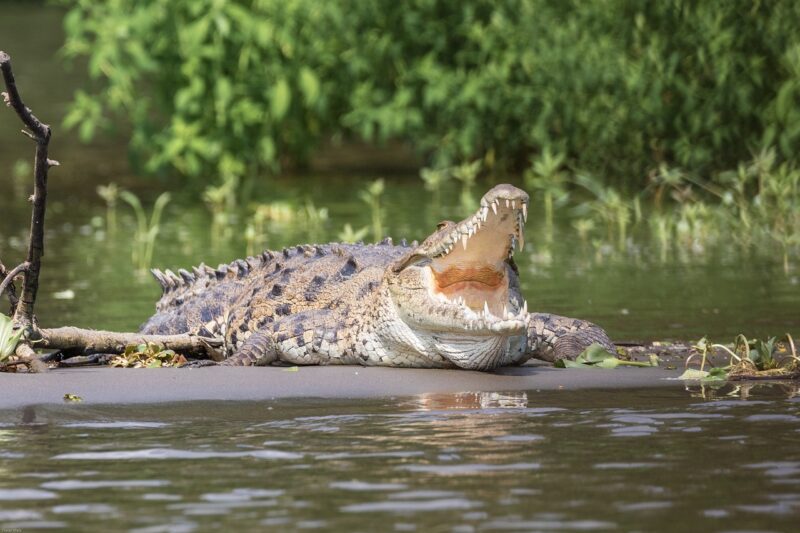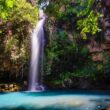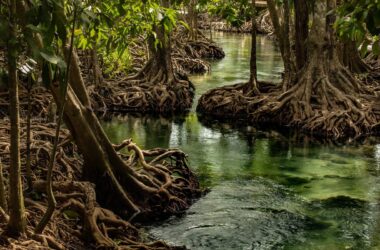Nestled on the remote Osa Peninsula in southwestern Costa Rica, Corcovado National Park is a breathtaking example of the country’s commitment to conservation and ecotourism. Covering over 164 square miles (424 square kilometers) of lush rainforest, the park is home to an incredible array of biodiversity, including jaguars, tapirs, scarlet macaws, and four species of monkeys.
Whether you’re an avid nature enthusiast or just looking to escape the hustle and bustle of modern life, Corcovado National Park is the perfect destination for a sustainable and unforgettable adventure.
History of Corcovado National Park
Corcovado National Park was established in 1975 with the goal of preserving the unique flora and fauna of the Osa Peninsula. The park is named after the Corcovado Mountain, which rises to an elevation of 2,513 feet (766 meters) and is the highest peak on the peninsula.
Prior to the park’s establishment, the Osa Peninsula was subject to significant deforestation and poaching. However, since the park’s creation, the area has become a sanctuary for a wide range of endangered species, including the Baird’s tapir, the Central American squirrel monkey, and the harpy eagle.
What to See and Do in Corcovado National Park
Corcovado National Park is a haven for wildlife enthusiasts and nature lovers. Visitors can explore the park on guided tours or self-guided hikes, with trails ranging from easy to challenging. Here are just a few of the incredible sights and experiences that await you in the park:
- Wildlife Spotting
Corcovado National Park is home to an astounding array of wildlife. Visitors can spot everything from howler monkeys and capuchin monkeys to sloths, anteaters, and wild cats such as ocelots and jaguars. Birdwatchers will be delighted by the park’s diverse birdlife, including toucans, parrots, and macaws.
- Beaches
Corcovado National Park boasts some of Costa Rica’s most beautiful and secluded beaches. Playa Llorona, for example, is a remote beach accessible only by boat or a long hike. The beach is a popular nesting site for sea turtles, and visitors may be lucky enough to witness turtles laying their eggs or hatchlings making their way to the ocean.
- Waterfalls
The park is also home to several stunning waterfalls, including the Cascada de San Pedrillo and the Cascada de Sirena. These waterfalls offer a refreshing break from the heat and humidity of the rainforest and provide excellent photo opportunities.
- Guided Tours
For those who want to learn more about the park’s flora and fauna, guided tours are available. Knowledgeable guides can lead you through the park’s trails, pointing out interesting plants and animals along the way. They can also share insights into the park’s history and conservation efforts.
Sustainability in Corcovado National Park
Corcovado National Park is a shining example of sustainable tourism in action. The park’s management prioritizes conservation, and visitors are required to follow strict rules and regulations to minimize their impact on the environment.
The park also supports the local economy by hiring local guides and staff, sourcing local products, and promoting sustainable tourism practices. Visitors can support these efforts by staying in eco-friendly accommodations, supporting local businesses, and following the park’s guidelines for responsible tourism.
Conclusion
Corcovado National Park is a natural wonder that offers something for everyone. Whether you’re a wildlife enthusiast, a nature lover, or simply looking to escape the stresses of modern life, this park is a must-visit destination. With its stunning biodiversity, secluded beaches, and refreshing waterfalls, Corcovado National Park is a true gem of Costa Rica’s ecotourism offerings.
Conservation Efforts in Corcovado National Park
Corcovado National Park is an important habitat for several endangered species, including the Baird’s tapir, the Central American squirrel monkey, and the harpy eagle. The park’s management has implemented several conservation initiatives to protect these and other species.
One such initiative is the establishment of ranger stations throughout the park. These stations help to deter illegal poaching and logging activities, and also serve as a base for park rangers to monitor the park’s wildlife and ecosystems.
Another important conservation effort is the park’s reforestation program. In the past, the Osa Peninsula was subject to significant deforestation, which resulted in habitat loss for many species. To combat this, the park has implemented a reforestation program that involves planting native tree species to restore degraded areas.
Community Involvement in Corcovado National Park
The success of Corcovado National Park’s conservation efforts is due in part to the involvement of local communities. The park’s management works closely with local communities to ensure that they benefit from the park’s presence, and that their livelihoods are not negatively impacted by conservation efforts.
One way that the park supports local communities is by hiring local guides and staff. These individuals have a deep understanding of the park’s ecosystems and wildlife, and can provide valuable insights to visitors. They also benefit from employment opportunities that support their families and communities.
Certification Programs in Corcovado National Park
Several certification programs exist to ensure that tourism in Corcovado National Park is sustainable and responsible. One such program is the Certification for Sustainable Tourism (CST) program, which is run by the Costa Rican Tourism Board. This program assesses tourism businesses and awards them a rating based on their sustainability practices.
Many of the lodges and tour companies that operate in and around Corcovado Park have received CST certification, which is a testament to their commitment to sustainable tourism practices. Visitors can support these efforts by choosing to stay at certified eco-friendly lodges and book tours with certified sustainable tour operators.
Final Thoughts
Corcovado Park is a shining example of Costa Rica’s commitment to conservation and ecotourism. Its stunning biodiversity, secluded beaches, and refreshing waterfalls make it a must-visit destination for nature lovers and adventure seekers alike. By supporting sustainable tourism practices and following the park’s guidelines for responsible tourism, visitors can ensure that this natural wonder remains protected for generations to come.
Similar Articles
- Andaman and Nicobar Islands Sustainable Tourism
- Sikkim Sustainable Tourism Practices
- Kabini: Preserving Natural Beauty and Supporting Local Communities
- Chilika Lake: Preserving Biodiversity and Empowering Communities
Frequently Asked Questions About Corcovado National Park
Q: What is Corcovado National Park?
A: Corcovado Park is a protected area located on the Osa Peninsula in Costa Rica. It is known for its high levels of biodiversity, including several endangered species, as well as its stunning landscapes and natural beauty.
Q: How do I get to Corcovado National Park?
A: There are several ways to get to Corcovado Park, including by boat, by foot, or by air. Most visitors access the park through the town of Puerto Jimenez, which has an airport and is also accessible by car or bus.
Q: What activities are available in Corcovado National Park?
A: Visitors to Corcovado Park can enjoy a variety of activities, including hiking, birdwatching, wildlife viewing, and beachcombing. Some popular trails include the Sirena Ranger Station Trail, the Los Patos Trail, and the Llorona Waterfall Trail.
Q: What wildlife can I see in Corcovado National Park?
A: Corcovado Park is home to a wide variety of wildlife, including jaguars, tapirs, monkeys, sloths, and a diverse array of bird species. Visitors may also have the opportunity to see sea turtles, dolphins, and whales along the park’s coastline.
Q: Can I camp in Corcovado Park?
A: Camping is allowed in designated areas within the park, but permits are required and must be obtained in advance. Visitors are also required to follow strict Leave No Trace principles to minimize their impact on the park’s fragile ecosystems.
Q: Is Corcovado National Park accessible to people with disabilities?
A: Corcovado Park has limited accessibility for people with disabilities. Some areas of the park may be difficult to navigate due to rugged terrain, and many of the park’s trails require a high level of physical fitness. Visitors with disabilities should consult with park officials before planning their trip to ensure that their needs can be accommodated.
Q: How can I support conservation efforts in Corcovado National Park?
A: Visitors can support conservation efforts in Corcovado Park by following park guidelines for responsible tourism, supporting sustainable tourism practices, and avoiding activities that could harm the park’s delicate ecosystems. Visitors can also donate to conservation organizations that work to protect the park and its wildlife.










